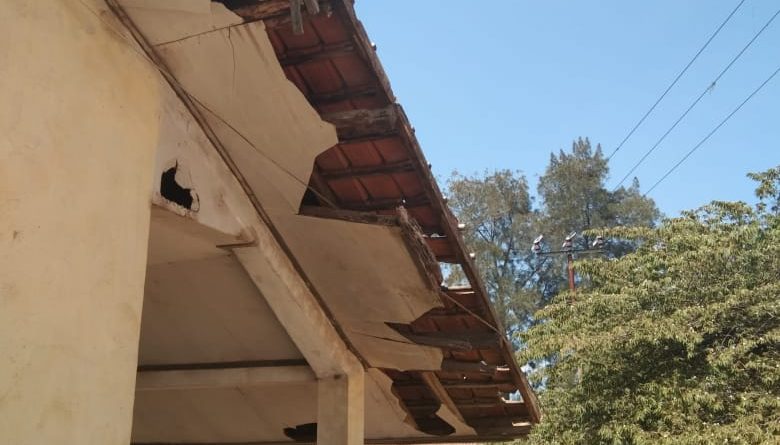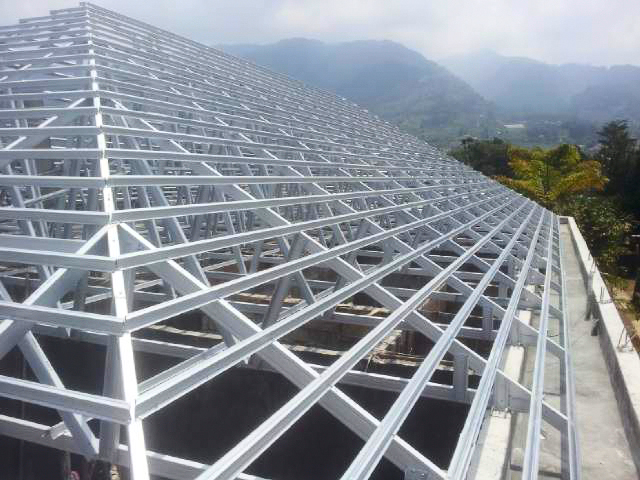Beranda > Artikel
Check Out These Roof Problems and Their Solutions

The roof is one of the most important, and even the most crucial, components of a house. If this component is damaged, it will certainly be a nuisance for the occupants. This is because during the rainy season, your house will leak. What are the problems with roofs? And how can they be solved? Here are some roof problems and their solutions:
1. Roof Too Sloping
The roof slope must be considered to ensure that falling water can drain quickly. A sloping roof causes water to drain slowly and eventually collects in the concrete and seeps through.
To fix this, the roof design must meet the ideal slope requirement of 30-40 degrees. This slope is the ideal limit for the roof frame to properly support the roof covering, allowing water to drain quickly to the ground. Conversely, a steep roof can cause the tiles to sag.
2. Leaking Roof
The roof needs to be inspected and maintained at least once a year. Pay attention to each ridge, the joints between the roof forms, and the gutters. Weather changes, especially extreme weather, can cause tiles to break easily and the cement on the ridge to crack. To do this, coat the tile joints, ridge, and gutters with waterproofing.
3. Porous Roof Truss
The causes of porous roof trusses vary, such as water seepage through gaps in the roof tiles and gutters. Replacing the entire roof truss is necessary if the damage is severe, such as rotting rafters or a large portion of the rafters. However, if the damage is limited to a small portion of the rafters and battens, you can simply repair the damaged area.
4. Sagging Roof
Tiles Clay tiles are generally designed for an angle of 27.5-40 degrees. If the angle is incorrect, water will enter. The gaps in the roof tiles are designed to prevent expansion of the tiles and also to provide ventilation.
It's best to slope the roof angle to a wider angle than 40 degrees. Each tile should also be nailed to the batten directly beneath it to prevent sagging.
5. Ridge Cracks
Ridge cracks occur due to weather changes. To overcome this, minimize roof connections, such as the use of ridges and overhangs. The ridge or overhang should not be too high, as this will create gaps that attract water. Alternatively, apply a special waterproof, soft, and flexible sheet over the ridge surface.
6. Hairline Cracks in Concrete Roofs
Continuous changes in heat and cold will cause fine cracks in concrete roofs. However, even the smallest cracks will allow water to enter. This problem can be overcome by paying attention to the concrete mix composition and the casting process, as these two factors significantly determine the quality of the concrete. If cracks have already occurred, apply waterproofing to the entire roof surface.
7. Heat in the Attic
Heat in the attic can be reduced with cross-ventilation. You can modify vents and create cavities under the roof tiles.
 Bahasa Indonesia
Bahasa Indonesia  Inggris
Inggris
 Bahasa Indonesia
Bahasa Indonesia  Inggris
Inggris
 Bahasa Indonesia
Bahasa Indonesia  Inggris
Inggris
 The roof is one of the most important, and even the most crucial, components of a house. If this component is damaged, it will certainly be a nuisance for the occupants. This is because during the rainy season, your house will leak. What are the problems with roofs? And how can they be solved? Here are some roof problems and their solutions:
The roof is one of the most important, and even the most crucial, components of a house. If this component is damaged, it will certainly be a nuisance for the occupants. This is because during the rainy season, your house will leak. What are the problems with roofs? And how can they be solved? Here are some roof problems and their solutions:




